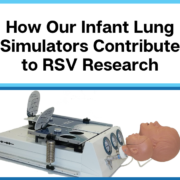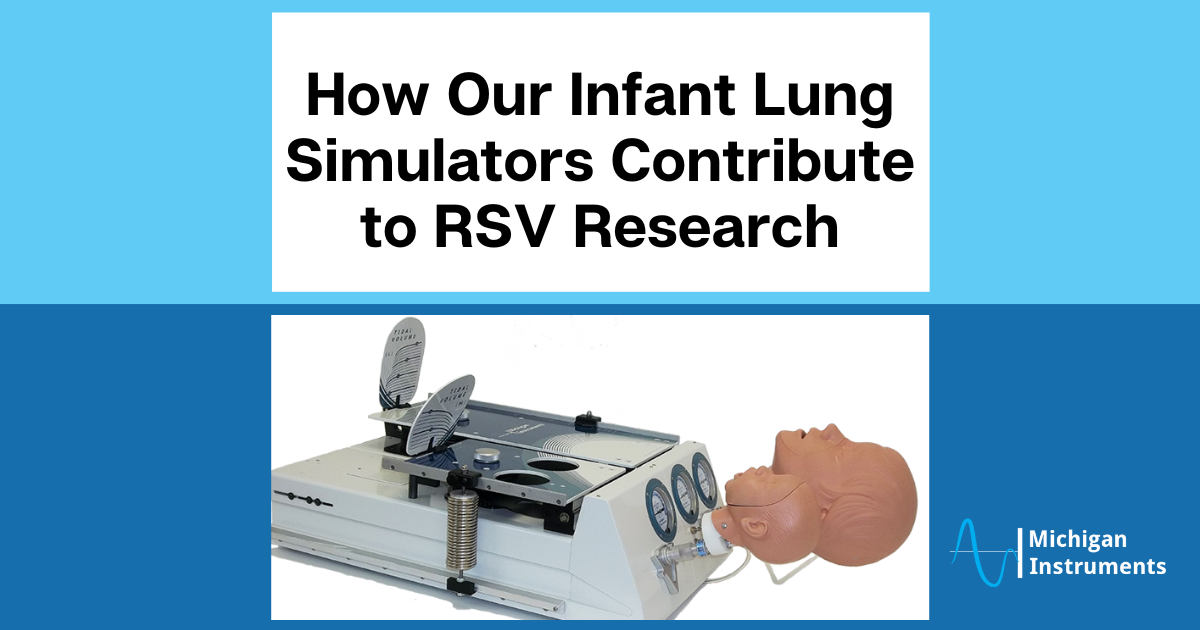Since the beginning of flu season in October, respiratory syncytial virus (RSV) has been on the rise all around the country. RSV typically hospitalizes about 60,000 children each year in the U.S, with the infection season peaking in the winter.
However, according to the CDC, doctors have found more cases in each week this past October than any week in the last two years.
This has driven our dedication to RSV research and to training medical students and practitioners for RSV cases and care. All this is possible with our infant lung simulators.
Understanding the Impact of RSV in Children
RSV is a respiratory virus that causes mild, cold-like symptoms in most people, with an average 7 day recovery time. However, infants are more likely to face far more significant side effects and longer recovery times.
In children younger than 12 months, RSV is the most common cause of bronchiolitis and pneumonia. Furthermore, one to two out of every 100 children younger than 6 months of age with RSV infection may need to be hospitalized.
Scientists are developing several vaccines, monoclonal antibodies, and antiviral therapies to help protect infants and young children, pregnant people (to protect their unborn babies), and older adults from severe infection.
However, many hospitals, facing staffing shortages, remain overwhelmed this RSV season. Medical schools and hospital leaders should prepare practitioners to treat RSV cases now more than ever.
Simulating RSV On Our Infant Lung Simulator
Unlike other similar models on the market today, our Infant Lung Simulator provides vast flexibility and several applications for simulating a wide range of patient populations.
This device realistically simulates infant lung capacity, clinically trains others on ventilator use and respiratory care in a hands-on manner, and simulates unexpected or complex scenarios.
Additionally, biomedical engineers, manufacturers, and service companies can use these simulators to test the performance of mechanical ventilators and similar respiratory care devices; all in an effort to ensure that their functions are adequate for illnesses like RSV.
How Do Our Simulators Help RSV Patients?
Professionals use our lung simulators to develop new therapy strategies while working against a realistic “load” (simulated lung mechanics). Further, our devices allow trainers to simulate a wide variety of healthy and diseased lung conditions to provide training for proper care of those with viruses or other conditions. Simply put; our devices are extremely versatile.
We take pride in our ability to train and educate current and future medical professionals, with a goal of contributing to research and new developments for care of those with respiratory illness.
Proactively Train Your Hospital Staff for a Better 2023
We know that good RSV-trained providers are invaluable — and not exactly interchangeable. With RSV still on the rise (and predicted to occur every year), proactive RSV research, training and development is more important than ever.
To learn more about our Infant Lung Simulator, visit our Lung Simulator Page or contact us directly today!





